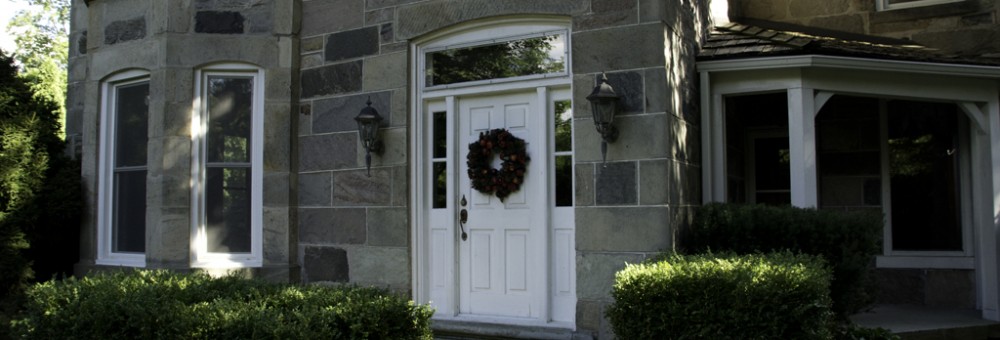Well, it finally happened. I had a ‘Mike Holmes moment’ of my very own here at Boo Manor.
You know the drill. Mike Holmes descends on a hapless couple in a helpless house that desperately needs fixing. The small problem that started it all soon leads to larger problems, and then the crowbars come out. Rip down a few walls, and the really big problems emerge. Then Mike Holmes manages a sincere look of sympathy for the camera, and says, “I’d better go talk to the homeowners.” That look is always very, very expensive.
Through much of the renovations, we have in fact been very fortunate. Sure there was the infestation of raccoons in the garage, and the rotted corpses they left behind. And there was the 10-foot wide room that managed to have a floor be three inches off level. And wallpaper was discovered under the paint in the dining room—as we started painting—meaning that the wallpaper needed to be removed, the walls needed to be skim coated and the room had to be repainted. But really, in the grand scheme of things, these are the problems you expect to encounter. Or at least, you should.
Finally, however, I found myself in the basement of the old house having a conversation that will sound very, very familiar to frequent viewers of Home & Garden TV. It started when Jason, the furnace guy (and he actually calls himself the furnace guy) was charging up the cooling system for the wine cellar. He had 15 minutes or so on his hands, and happened to hear our nearly-new furnace sounding a little unhappy, and decided to take a look. That’s when all the trouble started.
In the home inspection, this furnace was particularly singled out as being a fine example of the species. Brand new, two stage, with an awesome motor, it should give us years and years of happy service. Or so we were told. And this is not to fault the home inspection; everything that the inspector said was true, and they are generalists—they don’t specifically know everything there is to know about everything, and certainly aren’t experts in all things furnace.
Jason, however, is that guy. And what he saw concerned him. First, there was a cold-air-return grill directly installed on the ductwork leading to the furnace, which is usually an indication that the furnace is struggling to get enough air. A quick check of the ducting revealed that there were a lot of cold air return grills in the house, and many of them were no longer connected. At all. The intake in the furnace was much smaller than specified in the installation manual. Jumpers that should have been cut based upon our installation weren’t. And while the furnace might be appropriately sized if we were heating the entire house, it was entirely overkill in order to heat the half-side of the house it was responsible for. In fact, it was so overpowered that it was sucking the air filter into the motor.
I’ll stop there. It pains me to go on.
The question, then, was what to do about it. And the answer, apparently, was to keep the furnace but get rid of just about everything else. And so, on Monday of this week, Matt and Josh showed up as scheduled with their Tim Horton’s coffees, a boatload of sheet metal and looks of grim determination on their faces. So ensued two days of banging, crashing, hammering, sawing and more hammering, as our previous ductwork disappeared, and new ductwork took its place.
The furnace needed to be raised eight inches to put in an intake for a larger air filter. Two new cold air returns appeared in our floor. Useless cold air returns were covered up, rather than being gaping holes to the basement. Ducting to the outlets was upgraded to six inches. New outlets were created out of old and not-used cold air returns. And the result, two days later, was a magical transformation of the old basement from something scary and slightly hideous to a new, clean, relatively modern-looking heating system.
A few dip switch settings later, and Jason the furnace guy deemed us good to go. Our super-duty furnace had been dumbed down to a much more moderate heating unit, with appropriately sized ducting and sufficient return air for the furnace not to starve.
The moral of this story is that furnaces need to breathe, just like we do. Smother them, and they’re going to desperately try to suck air as well. If you have heating problems, that doesn’t mean that the problem is your furnace, it may be your ducting. A bigger furnace will not solve the problem, and it will likely fail faster because it has to work harder, ironically, to do the same job as a smaller furnace. You need an appropriately-sized appliance for the ducting that you have, and the ducting will tell you how big the appliance will be.
Which is really good to know, because now we’ve been told that the air conditioner in the old house has finally died as well.
